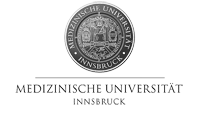|
|
 |
The aim of the study: Chronic inflammation in inflammatory bowel disease (IBD) may result from exaggerated stimulation of the mucosal immune system by the endogenous luminal bacterial flora. Bacterial products are recognized by pattern recognition receptors (PRRs) like Toll-like receptors (TLRs), which are key regulators of the innate immune system. Therefore the expression of TLR2, TLR3 and TLR4 in colonic biopsy samples taken from children with active IBD either fresly diagnosed (fd) or after relapse (r) on treatment were studied and compared to controls.
Methods: Colonic biopsy specimens were collected from 12 children [median (range): 13 (6-18) yr] with fdIBD and 23 children [15 (8-18) yr] with rIBD from macroscopically involved and noninvolved mucosa and 8 controls [median (range): 14 (6-16) yr]. TLR2, TLR3 and TLR4 mRNA expression were determined by real-time reverse transcription polymerase chain reaction (RT-PCR). Protein level of TLRs were detected by Western blot.
Results: The TLR2 and TLR4 mRNA expression were significantly increased in the involved colonic mucosa of children with fdIBD and rIBD compared to controls (p<0,05). TLR2 protein level in the involved colonic mucosa of patients with fdIBD and rIBD were 8.9 and 8.5 times higher than in controls, respectively (p<0.001 and p<0.0001). We found 5-fold and 4.5-fold elevation of the TLR4 protein level in the involved colonic mucosa of children with fdIBD and rIBD in comparison to controls, respectively (p<0,001 and p<0,0001). In the noninvolved mucosa of children with fdIBD and rIBD TLR2 and TLR4 mRNA expression and protein level were similar to controls (p=NS). TLR2 and TLR4 mRNA expression and protein level in either involved or noninvolved mucosa were similar in children with fdIBD and rIBD (p=NS). The TLR3 mRNA expression and protein level did not changed significantly (p=NS).
Conclusion: Our results of increased expression of TLR2 and TLR4 in the inflammed mucosa of children with IBD confirm the hypothesis that innate immunity has an important effect in the pathogenesis of this disease. However the non elevated expression of these PRRs in the noninvolved mucosa does not support their primary role in the development of IBD.
